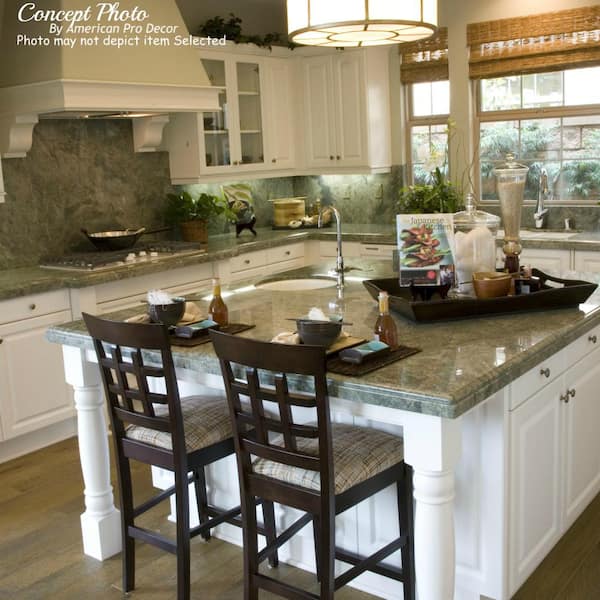An Overview to Picking the Perfect Legs For Kitchen Area Island for Your Home
Picking the optimal legs for your kitchen island is a nuanced decision that affects both the functionality and visual appeal of this main room. As you think about these elements, it ends up being evident that the best legs can transform not only the appearance of your kitchen but also its use for years to come.

Understanding Kitchen Area Island Legs
When choosing legs for a kitchen island, it's important to comprehend their useful and visual functions in the total style. The legs work as an important support system, ensuring stability and sturdiness for the island, which commonly operates as a workspace, eating area, or gathering spot. As a result, the option of material and building and construction method have to be robust sufficient to withstand everyday usage and possible wear.
Along with their structural obligations, legs add considerably to the island's visual allure. They can enhance the cooking area's style, whether through conventional, modern, or eclectic layouts. The elevation and proportion of the legs are also vital factors to consider; they need to balance with the island's countertop elevation while ensuring comfortable seating for those making use of the area.
Additionally, the leg layout can affect the overall circulation of the kitchen area. Open, airy leg styles can develop a feeling of agility, while solid, substantial legs may share an extra based and steady aesthetic - Legs For Kitchen Island. Comprehending these functional and visual facets will direct homeowners in making educated options that complement their cooking area's layout and improve its use
Popular Styles and Materials
The selection of legs for a cooking area island encompasses a variety of preferred styles and materials, each offering special features that can boost both performance and aesthetics. Among one of the most in-demand styles are modern, rustic, and traditional. Contemporary legs typically feature sleek, minimalist styles that stress simpleness and tidy lines, making them excellent for modern cooking areas. Rustic designs, on the various other hand, embrace all-natural components and usually showcase recovered timber or troubled surfaces, including heat and appeal to the room. Conventional legs usually display elaborate details and workmanship, boosting timeless kitchen area styles.

Height and Stability Factors To Consider

Security is one more vital consideration. The legs of the kitchen area island should offer appropriate assistance, making certain that the framework can stand up to day-to-day use without tottering or shifting. Product selection plays a significant role in stability; metal legs, for circumstances, tend to provide higher strength compared to timber. In addition, guaranteeing that the island is securely anchored to the floor or wall surface can improve security, especially for bigger islands that might birth substantial weight.
Matching Your Cooking Area Aesthetic
Selecting the best legs for your cooking area island goes beyond capability; it click this link additionally plays a significant duty in the total aesthetic of the space (Legs For Kitchen Island). When choosing legs, consider the layout style of your kitchen.
Shade is an additional essential variable. Legs that match or comparison with your island's surface and surrounding cabinets can create visual harmony or striking focal factors. Matching dark wood legs with a light marble kitchen counter can add depth and rate of interest. Furthermore, take into consideration the finish of the legs; matte, glossy, or distinctive finishes can considerably impact the total feeling of the cooking area.
Installation and Upkeep Tips
Mounting cooking area island legs requires careful interest to detail to ensure both security and aesthetic appeal. Use a stud finder to locate wall surface studs if you are connecting the legs to a wall surface or making use of braces for added assistance.
When safeguarding the legs, use top quality screws and, if essential, wood adhesive for extra stamina. For steel legs, make sure that you are making use of proper supports and tools to avoid damages to your flooring. It is recommended to inspect for levelness after installment, making modifications as required to avoid wobbling.
Tidy the legs with a suitable cleaner, avoiding rough materials that might scrape the surface. By following these installation and upkeep pointers, you can ensure that your cooking area island legs continue to be both functional and visually attractive.
Verdict
In verdict, choosing the ideal legs for a kitchen island demands careful consideration of height, security, and aesthetic compatibility. Ultimately, thoughtful leg choice plays an essential role in boosting both the usefulness and style of the cooking area space.
When choosing legs for a kitchen island, it's essential to understand their practical view it and aesthetic roles in the overall style. Open, airy leg styles can develop a sense of agility, while solid, considerable legs may convey a more grounded and steady visual. The legs of the kitchen island need to give sufficient support, making certain that the structure can endure daily usage without shifting or wobbling.Mounting cooking area island legs needs cautious interest to detail to make sure both security and visual allure.In conclusion, choosing the ideal legs for a cooking area island requires careful factor to consider of elevation, security, and visual compatibility.